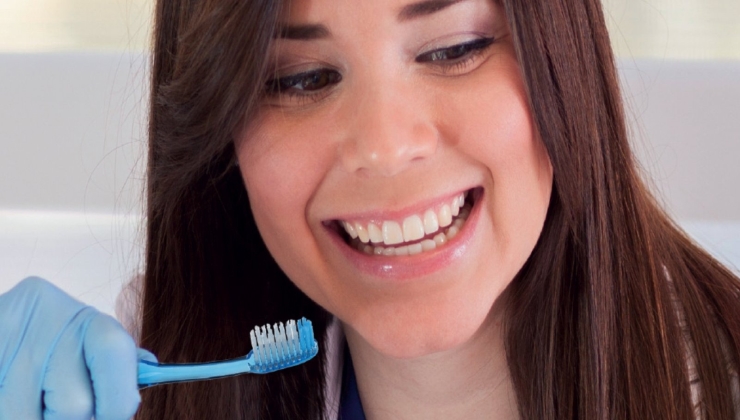In the realm of oral hygiene, the humble toothbrush stands as a frontline defender against plaque, cavities, and gum disease. Yet, not all toothbrushes are created equal. The debate between firm, medium, or soft toothbrushes has persisted, leaving many wondering which is truly the best for maintaining optimal dental health. In this exploration, we delve into the science behind toothbrushes and unravel why high-quality brushes matter for the long-term well-being of your teeth.
Understanding Toothbrush Bristles
The bristle type is the first crucial aspect to consider when selecting a toothbrush. Toothbrush bristles come in various degrees of firmness – firm, medium, and soft. Each type caters to different dental needs and sensitivities.
Firm Toothbrushes: Often recommended for individuals with robust enamel and a need for a thorough cleaning, firm toothbrushes boast stiff bristles that effectively remove plaque and debris. However, while they offer excellent cleaning power, firm brushes may be too harsh for those with sensitive gums or weakened enamel. Excessive force or abrasive brushing with a firm toothbrush can lead to gum recession and enamel erosion over time.
Medium Toothbrushes: Positioned between firm and soft options, medium toothbrushes strike a balance, providing adequate cleaning without being overly abrasive. Ideal for individuals with average dental health, medium brushes effectively remove plaque while being gentler on gums and enamel compared to their firmer counterparts.
Soft Toothbrushes: Recommended by many dental professionals, soft toothbrushes feature gentle bristles designed to clean teeth and gums without causing damage. Suitable for most people, including those with sensitive gums, braces, or dental restorations, soft brushes offer thorough cleaning without the risk of irritation or harm to enamel.
The Importance of Quality in Toothbrush Design
Beyond bristle firmness, the quality of toothbrush design plays a pivotal role in ensuring effective cleaning and overall oral health. High-quality toothbrushes often feature several key attributes that contribute to their superiority over lower-grade alternatives.
- Bristle Density: A dense arrangement of bristles ensures thorough cleaning by reaching into crevices and gaps between teeth, effectively removing plaque and food particles.
- Ergonomic Handle: A comfortable and ergonomic handle design facilitates proper grip and control during brushing, reducing hand fatigue and enhancing maneuverability.
- Angled Bristles: Angled bristles are adept at reaching difficult-to-access areas, such as the back molars, ensuring comprehensive cleaning throughout the mouth.
- Gum Massaging Features: Some toothbrushes incorporate rubberized bristles or massaging pads to stimulate gum tissue and promote circulation, contributing to gum health.
The Role of Toothbrushing Technique
Regardless of the toothbrush type or quality, proper brushing technique is paramount for maximizing cleaning efficacy while minimizing the risk of dental damage. Dental professionals recommend the following steps for optimal brushing:
- Angle the Brush: Hold the toothbrush at a 45-degree angle to the gums, directing the bristles toward the gumline. This position facilitates effective plaque removal from both teeth and gums.
- Gentle Pressure: Apply gentle pressure while brushing to avoid excessive force on teeth and gums. Aggressive brushing can lead to gum recession and enamel wear.
- Circular Motion: Utilize small, circular motions to clean the front, back, and chewing surfaces of teeth thoroughly. Avoid scrubbing back and forth, as it can cause enamel abrasion.
- Don’t Forget the Tongue and Inner Cheeks: Brushing the tongue and inner cheeks helps remove bacteria and freshen breath. For this purpose, many toothbrushes feature a tongue scraper on the back of the brush head.
The Long-Term Benefits of High-Quality Toothbrushes
Investing in a high-quality toothbrush pays dividends in terms of long-term dental health and overall well-being. Here’s how:
- Reduced Risk of Dental Issues: High-quality toothbrushes with appropriate bristle firmness and effective design contribute to superior plaque removal, reducing the risk of cavities, gum disease, and other dental issues.
- Gentle on Gums and Enamel: Soft or medium toothbrushes with well-designed bristles are gentle on gums and enamel, minimizing the likelihood of irritation, recession, or erosion associated with aggressive brushing.
- Improved Oral Hygiene Habits: The comfort and efficacy of a high-quality toothbrush can motivate individuals to adhere to regular brushing habits, leading to better oral hygiene and decreased reliance on costly dental treatments.
- Enhanced Overall Health: Maintaining good oral health through proper brushing with a high-quality toothbrush is linked to reduced risks of systemic conditions such as cardiovascular disease, diabetes, and respiratory infections.
Exploring Advanced Toothbrush Technologies
Recent advancements in toothbrush technology have further enhanced the efficacy and user experience of oral hygiene products. From sonic vibrations to smart features, these innovations offer additional benefits for those seeking optimal dental care.
- Sonic Toothbrushes: Sonic toothbrushes utilize high-frequency vibrations to dislodge plaque and debris from teeth and gums, providing a deeper clean compared to traditional brushing methods.
- Electric Toothbrushes: Electric toothbrushes feature rotating or oscillating brush heads that automate the brushing process, ensuring consistent pressure and motion for thorough cleaning.
- Smart Toothbrushes: Smart toothbrushes are equipped with sensors and connectivity features that track brushing habits, provide real-time feedback, and sync with mobile apps to monitor oral health progress over time.
While these advanced technologies may come at a higher price point, they offer convenience, precision, and personalized guidance for achieving optimal oral hygiene.
Conclusion
In the realm of oral hygiene, selecting the right toothbrush is not merely a matter of preference but a decision with significant implications for dental health. The science behind toothbrush design and bristle firmness underscores the importance of choosing a high-quality brush tailored to individual needs. Whether opting for a firm, medium, or soft toothbrush or exploring advanced technologies, prioritizing quality ensures effective plaque removal, minimizes the risk of dental damage, and contributes to long-term health and overall well-being. So, the next time you reach for your toothbrush, remember: investing in quality pays off in smiles that last a lifetime.

